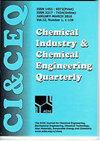评估变速驱动器,以提高能源效率和减少气体排放:案例研究
IF 0.8
4区 工程技术
Q4 CHEMISTRY, APPLIED
Chemical Industry & Chemical Engineering Quarterly
Pub Date : 2022-01-01
DOI:10.2298/ciceq220318018s
引用次数: 0
摘要
变速驱动是减少电动机能耗最有前途的技术。本文讨论了通过安装变速驱动器来控制石油加工设施中的旋转设备电机(如泵、压缩机、鼓风机和风扇)所实现的节能。除了节能,变速驱动器将提高整体设备效率,提高可靠性,并减少温室气体(GHG)排放。能源审计是在一个案例研究中进行的,以调查所有电动机的能源消耗。讨论了安装和操作变速驱动器的技术和操作限制。安装时需要调整操作时间表和参数,以降低能耗。案例研究说明了如何计算管道、空气冷却器、炉子鼓风机、可变流量泵和往复式压缩系统的节能。在鼓风机、风扇和泵中,变速驱动器在技术上和经济上都被接受。能源消耗和温室气体排放减少67%,整个项目投资回收期不到1年。对往复式压缩机不适用,投资回收期为6.2年。本文章由计算机程序翻译,如有差异,请以英文原文为准。
Evaluation of variable speed drives to improve energy efficiency and reduce gas emissions: Case study
Variable speed drives are the most promising technique to reduce electric motors energy consumption. This paper discusses energy savings achieved by installing variable speed drives to control rotating equipment motors such as pumps, compressors, blowers, and fans in oil processing facilities. In addition to energy savings, variable speed drives will improve overall equipment efficiency, increase reliability, and reduce greenhouse gases (GHG) emissions. An Energy audit was performed on a case study to investigate energy consumption for all electric motors. Technical and operational constraints for installing and operating variable speed drives have been discussed. Installation requires adjustments in operation schedules and parameters to allow reducing energy consumption. The case study has illustrated how to calculate energy savings for Pipelines, air coolers, air blowers for furnaces, pumps with variable flow rates and reciprocating compressing systems. Variable speed drives were technically and economically accepted in air blowers, fans, and pumps. Energy consumption and greenhouse gases have been reduced by 67%, Payback period for the whole project was less than 1 year. Meanwhile, it was not valid for reciprocating compressors as the Payback period was 6.2 years.
求助全文
通过发布文献求助,成功后即可免费获取论文全文。
去求助
来源期刊

Chemical Industry & Chemical Engineering Quarterly
CHEMISTRY, APPLIED-ENGINEERING, CHEMICAL
CiteScore
2.10
自引率
0.00%
发文量
24
审稿时长
3.3 months
期刊介绍:
The Journal invites contributions to the following two main areas:
• Applied Chemistry dealing with the application of basic chemical sciences to industry
• Chemical Engineering dealing with the chemical and biochemical conversion of raw materials into different products as well as the design and operation of plants and equipment.
The Journal welcomes contributions focused on:
Chemical and Biochemical Engineering [...]
Process Systems Engineering[...]
Environmental Chemical and Process Engineering[...]
Materials Synthesis and Processing[...]
Food and Bioproducts Processing[...]
Process Technology[...]
 求助内容:
求助内容: 应助结果提醒方式:
应助结果提醒方式:


